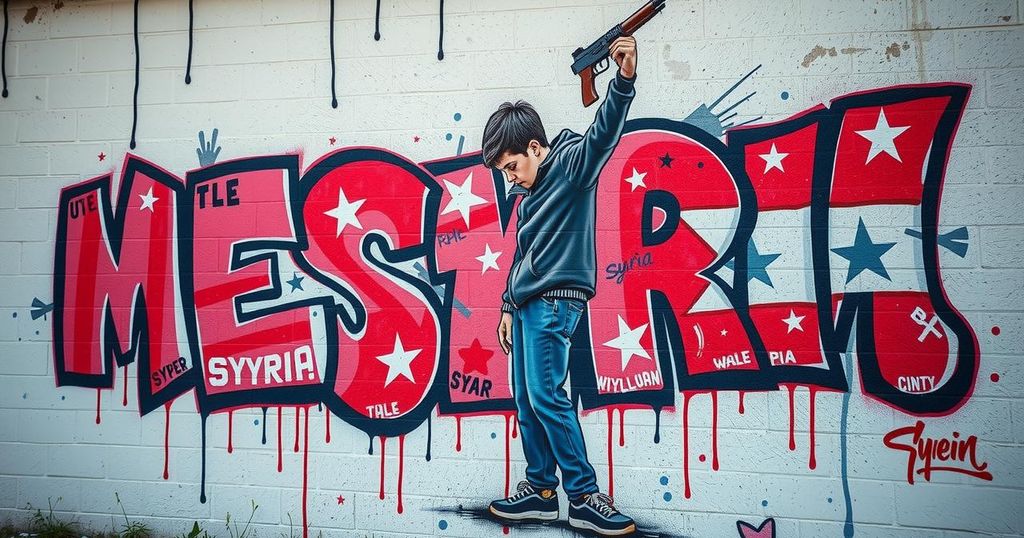The Transformative Power of Rebellion: How Teen Graffiti Sparked Syria’s Revolution

The graffiti of a teenager in Syria ignited a revolution against President Bashar al-Assad’s regime, transforming discontent into widespread civil unrest and armed conflict. The uprising led to a devastating humanitarian crisis and has radically reshaped Syria’s political landscape, resulting in extensive loss of life and displacement. A decade later, rebel forces challenge the regime’s grip on power, marking a complex journey of resistance and repression.
In 2011, a seemingly insignificant act of rebellion by a 14-year-old boy named Mouawiya Syasneh ignited a revolution in Syria that ultimately aimed to challenge the longstanding regime of President Bashar al-Assad. Syasneh, armed only with a spray can, scrawled a defiant message on a school wall in the small town of Daraa, signaling discontent with the oppressive rule. Despite the brutal crackdown that ensued—which included torture and violent suppression from the regime—the incident catalyzed a widespread civil uprising, inspired by similar movements across the Arab world. The initial calls for freedom escalated into an armed conflict as dissenters sought to overthrow Assad, leading to a humanitarian crisis of unprecedented proportions, with millions displaced and countless lives lost.
As tensions rose, the Syrian people began to organize themselves more effectively. The grassroots efforts soon morphed into an armed rebellion, bolstered by defectors from Assad’s military, forming the Free Syrian Army (FSA). However, the fight against Assad’s forces also gave rise to extremist factions, contributing to a fracturing of the opposition. The war that began with the innocent act of a teenager transformed into a struggle rife with complexities, resulting in what has become one of the most tragic humanitarian crises in the modern era, with over half a million Syrians dead and entire cities reduced to rubble.
A decade after the graffiti incident sparked the uprising, the situation in Syria has taken another turn. Rebel forces, particularly those linked to Hayat Tahrir al-Sham (HTS), have gained ground in major urban centers, challenging Assad’s authority, who is now reportedly in hiding in Russia. This cycle of rebellion and repression illustrates the powerful impact of defiance against tyranny, underscoring the harsh realities faced by those who demand their freedom at a tremendous cost. The future of Syria remains uncertain, leaving the world to witness the unfolding of its tumultuous history.
The Syrian revolution was catalyzed by a specific incident involving a teenager and his act of graffiti, which expressed deep-seated frustrations with the existing regime. This was not merely an act of vandalism but a bold declaration of rebellion against a long-standing autocratic governance. The historical context framed by the oppressive rule of the Assad family highlights the grievances of civilians and sets the stage for understanding the profound societal response that followed. The initial spark of dissent would snowball into a national uprising, affected by regional movements challenging authoritarian rule across the Arab world.
In conclusion, a simple act of defiance by a young boy served as the catalyst for what would become a devastating civil war in Syria. The escalation of protests into armed rebellion illustrates the lethal interplay between oppression and resistance. The ongoing consequences of this uprising have left permanent scars on the nation, with a humanitarian disaster that raises significant concerns for global stability. As Syria’s future unfolds amid new power dynamics, history serves as a stark reminder of the costs of repression and the indomitable spirit yearning for freedom.
Original Source: www.indiatoday.in








